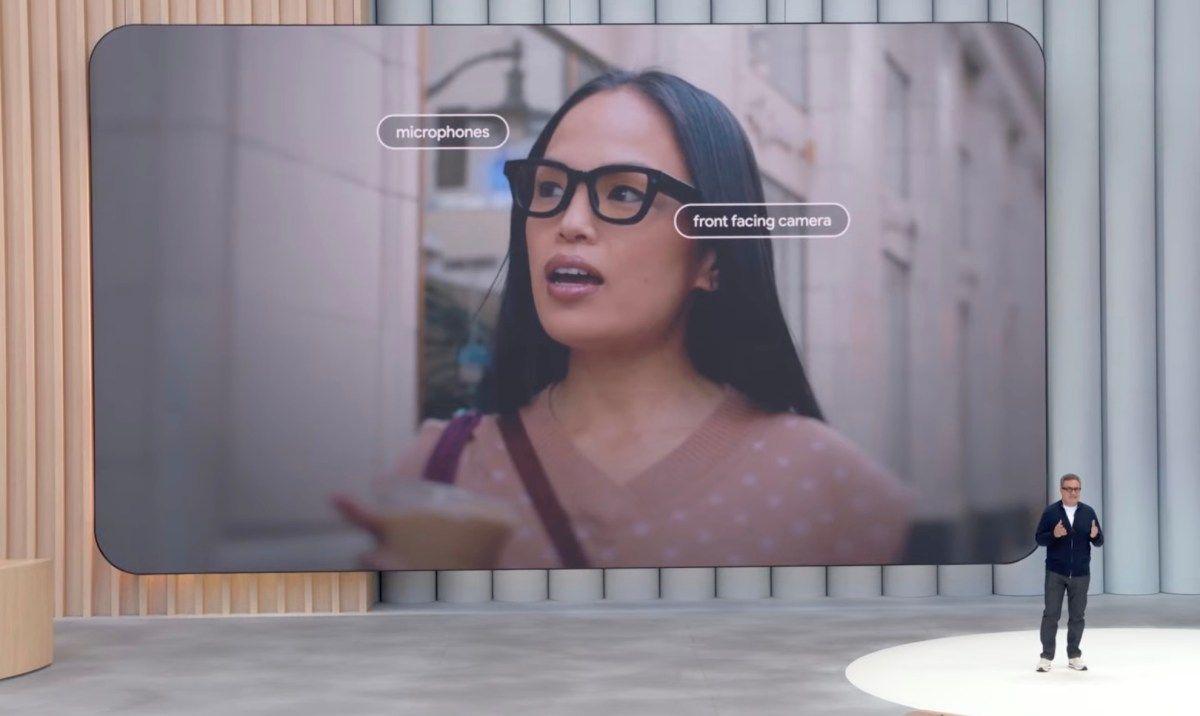Nvidia's DRIVE Hyperion Platform Achieves Critical Safety Milestones for Autonomous Vehicles
2 Sources
2 Sources
[1]
Nvidia Drive Hyperion platform passes key safety assessments for autonomous vehicles
Join our daily and weekly newsletters for the latest updates and exclusive content on industry-leading AI coverage. Learn More Nvidia today announced that its autonomous vehicle (AV) platform, Nvidia Drive AGX Hyperion, has passed industry-safety assessments by TÜV SÜD and TÜV Rheinland -- two of the industry's foremost authorities for automotive-grade safety and cybersecurity. This achievement raises the bar for AV safety, innovation and performance, Nvidia said during the keynote speech by Nvidia CEO Jensen Huang at CES 2025, the big tech trade show in Las Vegas this week. Drive Hyperion is the industry's end-to-end autonomous driving platform. It includes the Drive AGX system-on-a-chip (SoC) and reference board design, the Nvidia DriveOS automotive operating system, a sensor suite, and an active safety and level 2+ driving stack. Automotive safety pioneers such as Mercedes-Benz, JLR and Volvo Cars are adopting the platform, which is designed to be modular, so customers can easily use what they need. It is also scalable and built to be upgradeable and compatible across future DRIVE SoC generations. Available in the first half of this year, the latest iteration of Drive Hyperion -- designed for both passenger and commercial vehicles -- will feature the high-performance Drive AGX Thor SoC built on the Nvidia Blackwell architecture. "A billion vehicles driving trillions of miles each year move the world. With autonomous vehicles -- one of the largest robotics markets -- now here, the Nvidia Blackwell-powered platform will shift this revolution into high gear," said Huang. "The next wave of autonomous machines will rely on physical AI world foundation models to understand and interact with the real world, and Nvidia Drive is purpose-built for this new era, delivering unmatched functional safety and AI." Driving Safety Forward: Certified Assurance for Next-Gen Vehicles Next-generation vehicles will be increasingly software-defined, capable of receiving new features and functionality over their lifetime. Tapping into Nvidia's 15,000 engineering years invested in vehicle safety, DRIVE Hyperion will help ensure advanced automotive systems with rich, AI-based functionalities are compliant with the automotive industry's stringent functional safety and cybersecurity standards. Nvidia recently received safety certifications and assessments from accredited third parties, including: ● TÜV SÜD, which granted the ISO 21434 Cybersecurity Process certification to Nvidia for automotive SoC, platform and software engineering processes. Additionally, Nvidia DriveOS 6.0 conforms to ISO 26262 Automotive Safety Integrity Level (ASIL) D standards, pending certification release. ● TÜV Rheinland, which performed an independent United Nations Economic Commission for Europe (UNECE) safety assessment of Nvidia Drive AV related to safety requirements for complex electronic systems. In addition, Nvidia is now accredited by the ANSI National Accreditation Board (ANAB) to provide safety and cybersecurity inspections for Nvidia Drive ecosystem partners. The new Nvidia Drive AI Systems Inspection Lab will help the Nvidia Drive automotive ecosystem build autonomous driving software that meets the industry's evolving safety and AI standards. Nvidia is the first platform company to receive a comprehensive set of third-party assessments for its automotive technologies -- including the Nvidia Drive end-to-end self-driving platform, spanning SoC, OS, sensor architecture and level 2+ application software -- as well as independent accreditation as an AI systems safety and cybersecurity inspection lab for the automotive market. Intelligence Powered by Industry-Leading Compute Nvidia Drive Thor, the core computer for Drive Hyperion, is the successor to the production-proven Nvidia Drive Orin. Its architecture compatibility and scalability means developers can use existing software from earlier DRIVE product generations, as well as integrate future updates, to achieve seamless development pipelines. Drive Thor is based on the Nvidia Blackwell architecture and is optimized for the most demanding processing workloads, including those involving generative AI, vision language models and large language models. Its simplified architecture enhances generalization, reduces latency and boosts safety by harnessing powerful Nvidia accelerated computing to run the end-to-end AV stack and a proven safety stack in parallel. Drive Thor paves the way for the next era of AV technology, known as AV 2.0, which involves delivering humanlike autonomous driving capabilities for navigating the most complex roadway scenarios. In addition to the Drive AGX in-vehicle computer, two other Nvidia computers serve as the foundation for automotive-grade AV development: Nvidia DGX systems for training advanced AI models and building a robust AV software stack in the cloud, and the Nvidia Omniverse platform running on Nvidia OVX systems for simulation and validation. These three computers, now enhanced with the new Nvidia Cosmos world foundation model platform, are set to accelerate end-to-end AV development and mass deployment.
[2]
NVIDIA DRIVE Hyperion Platform Achieves Critical Automotive Safety and Cybersecurity Milestones for AV Development
, (GLOBE NEWSWIRE) -- CES -- today announced that its autonomous vehicle (AV) platform, DRIVE AGX™ Hyperion, has passed industry-safety assessments by TÜV SÜD and TÜV Rheinland -- two of the industry's foremost authorities for automotive-grade safety and cybersecurity. This achievement raises the bar for AV safety, innovation and performance. DRIVE Hyperion™ is the industry's first and only end-to-end autonomous driving platform. It includes the DRIVE AGX™ system-on-a-chip (SoC) and reference board design, the DriveOS automotive operating system, a sensor suite, and an active safety and level 2+ driving stack. Automotive safety pioneers such as Mercedes-Benz, JLR and are adopting the platform, which is designed to be modular, so customers can easily use what they need. It is also scalable and built to be upgradeable and compatible across future DRIVE SoC generations. Available in the first half of this year, the latest iteration of DRIVE Hyperion -- designed for both passenger and commercial vehicles -- will feature the high-performance DRIVE AGX Thor SoC built on the Blackwell architecture. "A billion vehicles driving trillions of miles each year move the world. With autonomous vehicles -- one of the largest robotics markets -- now here, the Blackwell-powered platform will shift this revolution into high gear," said , founder and CEO of . "The next wave of autonomous machines will rely on physical AI world foundation models to understand and interact with the real world, and DRIVE is purpose-built for this new era, delivering unmatched functional safety and AI." Driving Safety Forward: Certified Assurance for Next-Gen Vehicles Next-generation vehicles will be increasingly software-defined, capable of receiving new features and functionality over their lifetime. Tapping into NVIDIA's 15,000 engineering years invested in vehicle safety, DRIVE Hyperion will help ensure advanced automotive systems with rich, AI-based functionalities are compliant with the automotive industry's stringent functional safety and cybersecurity standards. recently received safety certifications and assessments from accredited third parties, including: In addition, is now accredited by the ANSI National Accreditation Board (ANAB) to provide safety and cybersecurity inspections for DRIVE™ ecosystem partners. The new will help the DRIVE automotive ecosystem build autonomous driving software that meets the industry's evolving safety and AI standards. is the first platform company to receive a comprehensive set of third-party assessments for its automotive technologies -- including the DRIVE end-to-end self-driving platform, spanning SoC, OS, sensor architecture and level 2+ application software -- as well as independent accreditation as an AI systems safety and cybersecurity inspection lab for the automotive market. Intelligence Powered by Industry-Leading Compute DRIVE Thor, the core computer for DRIVE Hyperion, is the successor to the production-proven DRIVE Orin™. Its architecture compatibility and scalability means developers can use existing software from earlier DRIVE product generations, as well as integrate future updates, to achieve seamless development pipelines. DRIVE Thor is based on the Blackwell architecture and is optimized for the most demanding processing workloads, including those involving generative AI, vision language models and large language models. Its simplified architecture enhances generalization, reduces latency and boosts safety by harnessing powerful accelerated computing to run the end-to-end AV stack and a proven safety stack in parallel. DRIVE Thor paves the way for the next era of AV technology, known as AV 2.0, which involves delivering humanlike autonomous driving capabilities for navigating the most complex roadway scenarios. In addition to the DRIVE AGX in-vehicle computer, two other computers serve as the foundation for automotive-grade AV development: DGX™ systems for training advanced AI models and building a robust AV software stack in the cloud, and the Omniverse™ platform running on OVX™ systems for simulation and validation. These three computers, now enhanced with the new Cosmos™ world foundation model platform, are set to accelerate end-to-end AV development and mass deployment. To learn more about NVIDIA's three-computer approach to automotive development and the Cosmos world foundation model platform along with other automotive news, tune in to Huang's CES opening keynote. Certain statements in this press release including, but not limited to, statements as to: the benefits, impact, and performance of NVIDIA's products, services, and technologies, including DRIVE AGX Hyperion, DriveOS automotive operating system, , DRIVE Thor, DRIVE Orin, Blackwell architecture, DGX systems, Omniverse platform, OVX systems, and Cosmos; third parties adopting NVIDIA's products and technologies; with autonomous vehicles -- one of the largest robotics markets -- now here, the Blackwell-powered platform shifting this revolution into high gear; the next wave of autonomous machines relying on physical AI world foundation models to understand and interact with the real world; DRIVE delivering unmatched functional safety and AI; next-generation vehicles being increasingly software-defined, capable of receiving new features and functionality over their lifetime are forward-looking statements that are subject to risks and uncertainties that could cause results to be materially different than expectations. Important factors that could cause actual results to differ materially include: global economic conditions; our reliance on third parties to manufacture, assemble, package and test our products; the impact of technological development and competition; development of new products and technologies or enhancements to our existing product and technologies; market acceptance of our products or our partners' products; design, manufacturing or software defects; changes in consumer preferences or demands; changes in industry standards and interfaces; unexpected loss of performance of our products or technologies when integrated into systems; as well as other factors detailed from time to time in the most recent reports files with the , or , including, but not limited to, its annual report on Form 10-K and quarterly reports on Form 10-Q. Copies of reports filed with the are posted on the company's website and are available from without charge. These forward-looking statements are not guarantees of future performance and speak only as of the date hereof, and, except as required by law, disclaims any obligation to update these forward-looking statements to reflect future events or circumstances. Many of the products and features described herein remain in various stages and will be offered on a when-and-if-available basis. The statements above are not intended to be, and should not be interpreted as a commitment, promise, or legal obligation, and the development, release, and timing of any features or functionalities described for our products is subject to change and remains at the sole discretion of . will have no liability for failure to deliver or delay in the delivery of any of the products, features or functions set forth herein. © 2025 . All rights reserved. , the logo, Cosmos, DGX, DRIVE, DRIVE AGX, DRIVE AGX Hyperion, DRIVE AGX Thor, DRIVE Hyperion, DRIVE Orin, DRIVE Thor, Omniverse and OVX are trademarks and/or registered trademarks of in the and other countries. Other company and product names may be trademarks of the respective companies with which they are associated. Features, pricing, availability and specifications are subject to change without notice. A photo accompanying this announcement is available at https://www.globenewswire.com/NewsRoom/AttachmentNg/86e6d016-126f-447f-a3d2-326b27185d5c
Share
Share
Copy Link
Nvidia's autonomous vehicle platform, DRIVE AGX Hyperion, has passed key industry-safety assessments, setting new standards for AV safety, innovation, and performance. The platform features advanced AI capabilities and is designed for both passenger and commercial vehicles.

Nvidia's DRIVE Hyperion Platform Achieves Critical Safety Milestones
Nvidia has announced that its autonomous vehicle (AV) platform, DRIVE AGX Hyperion, has passed industry-safety assessments by TÜV SÜD and TÜV Rheinland, two of the industry's leading authorities for automotive-grade safety and cybersecurity
1
2
. This achievement sets a new benchmark for AV safety, innovation, and performance, as revealed during Nvidia CEO Jensen Huang's keynote speech at CES 2025.Comprehensive End-to-End AV Platform
DRIVE Hyperion is the industry's first end-to-end autonomous driving platform. It encompasses:
- DRIVE AGX system-on-a-chip (SoC) and reference board design
- DriveOS automotive operating system
- Sensor suite
- Active safety and level 2+ driving stack
The platform is designed to be modular, scalable, and upgradeable, allowing customers to easily integrate what they need and remain compatible with future DRIVE SoC generations
1
.Advanced AI and Computing Power
The latest iteration of DRIVE Hyperion, available in the first half of this year, will feature the high-performance DRIVE AGX Thor SoC built on the Nvidia Blackwell architecture. This advanced chip is optimized for demanding processing workloads, including generative AI, vision language models, and large language models
2
.Safety Certifications and Assessments
Nvidia has received several important safety certifications and assessments:
- TÜV SÜD granted ISO 21434 Cybersecurity Process certification for Nvidia's automotive SoC, platform, and software engineering processes.
- Nvidia DriveOS 6.0 conforms to ISO 26262 Automotive Safety Integrity Level (ASIL) D standards, pending certification release.
- TÜV Rheinland performed an independent UNECE safety assessment of Nvidia Drive AV related to safety requirements for complex electronic systems
1
.
Nvidia's Unique Position in the AV Industry
Nvidia has become the first platform company to receive a comprehensive set of third-party assessments for its automotive technologies. This includes the entire DRIVE end-to-end self-driving platform, spanning SoC, OS, sensor architecture, and level 2+ application software
2
.Related Stories
The Future of Autonomous Vehicles
Jensen Huang, Nvidia's founder and CEO, emphasized the significance of this development: "With autonomous vehicles -- one of the largest robotics markets -- now here, the Nvidia Blackwell-powered platform will shift this revolution into high gear. The next wave of autonomous machines will rely on physical AI world foundation models to understand and interact with the real world"
2
.Industry Adoption and Impact
Leading automotive safety pioneers such as Mercedes-Benz, JLR, and Volvo Cars are adopting the DRIVE Hyperion platform. This adoption signifies a major step towards the next era of AV technology, known as AV 2.0, which aims to deliver human-like autonomous driving capabilities for navigating complex roadway scenarios
1
2
.Nvidia's Three-Computer Approach
Nvidia's comprehensive approach to automotive development involves three key components:
- DRIVE AGX in-vehicle computer
- DGX systems for training advanced AI models and building AV software stacks in the cloud
- Omniverse platform running on OVX systems for simulation and validation
These systems, enhanced with the new Nvidia Cosmos world foundation model platform, are set to accelerate end-to-end AV development and mass deployment
2
.References
Summarized by
Navi
Related Stories
Nvidia Expands AI Partnerships for Next-Generation Autonomous Vehicles
07 Jan 2025•Technology

NVIDIA Unveils AI Innovations for Retail, Robotics, and Autonomous Vehicles at CES 2025
07 Jan 2025•Technology

NVIDIA AI Summit Panel Highlights Autonomous Driving Safety and Simulation Advancements
12 Oct 2024•Technology

Recent Highlights
1
AI Chatbots Sway Voters More Effectively Than Traditional Political Ads, New Studies Reveal
Science and Research

2
Google AI glasses set to launch in 2026 with Gemini and Android XR across multiple partners
Technology

3
EU Launches Antitrust Probe Into Google's AI Training Practices and Content Usage
Policy and Regulation




